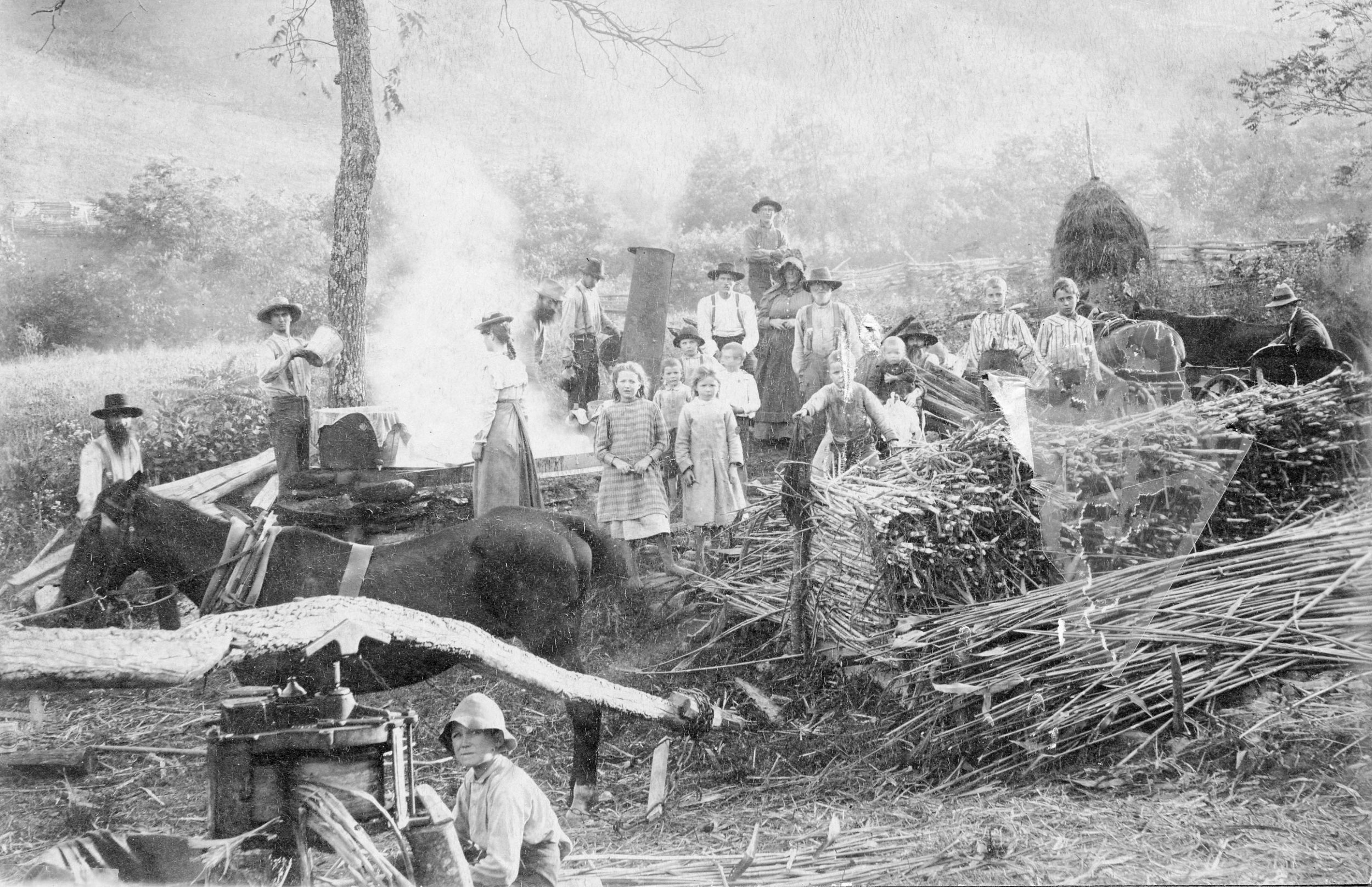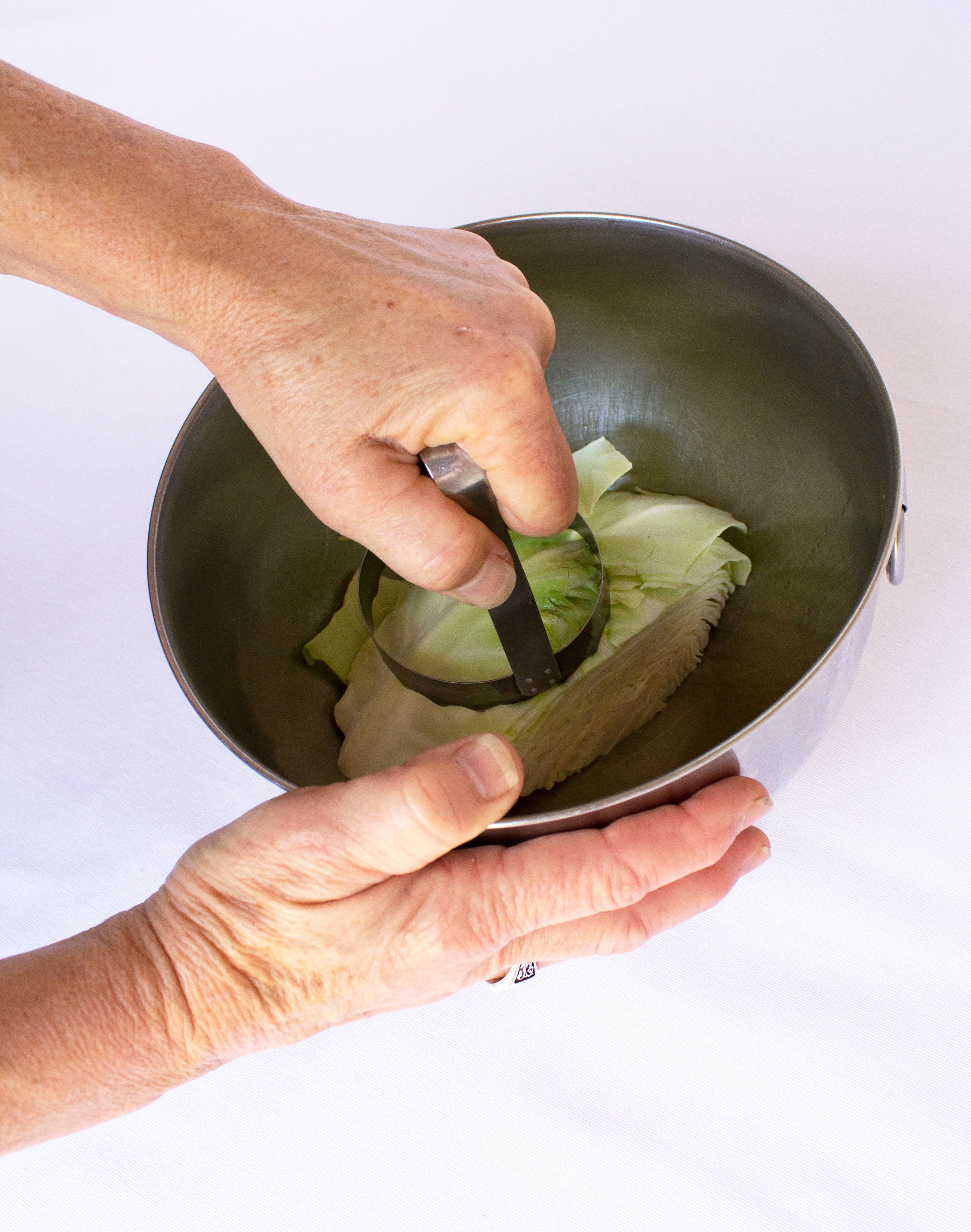Mr. and Mrs. W.T. Wilson on their farm
Community of corn huskers
Farming the Land
The earliest white settlers to Haywood County secured large tracts of choice river-bottom land. Later, settlers built their farms on more remote land upstream in coves and on mountain slopes. Large-scale farms often raised enough crops or livestock to export surpluses while smaller farms simply grew for survival. The self-sufficiency of these early farms, whatever their size, was often reflected in their buildings: a residence, barn, springhouse, smokehouse, corn crib, and perhaps an earthen cellar for vegetable storage. In 1942, such buildings can still be seen on the farm of Mr. and Mrs. W.T. Wilson, aged 63 and 53 respectively.
Despite their self-sufficiency, farmers still sought out help from neighbors. Turning large jobs like corn husking into social occasions created strong bonds of friendship for Haywood’s farming communities.
Some farmers were sharecroppers or tenant farmers who would lease a piece of property from the landowner in return for fixed rent, a percentage of the harvest, or work on the farm.
Photographs courtesy of Clarine Best, The Haywood County Library Digital Collection










